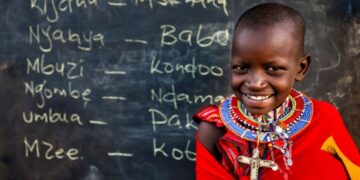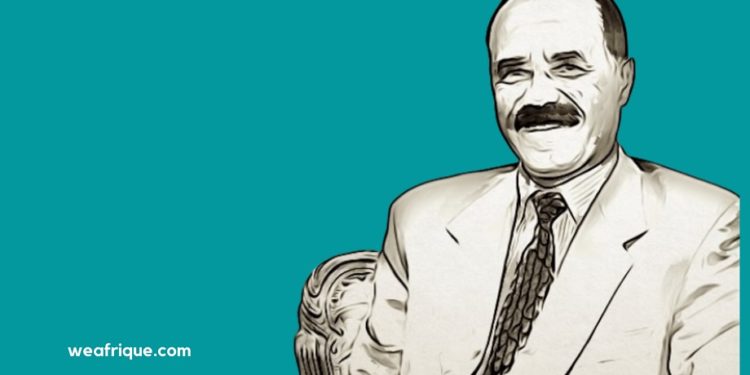Eritrea is a former colony of Italy located on the easternmost part of continental Africa, in an area called the Horn of Africa. It shares similar cultures and traditions with other Great Horn neighbors that border it to the Southeast, South, and West, namely, Djibouti, Ethiopia, and Sudan respectively.
Though small and poor, with a long history of wars and droughts, Eritrea’s coastline, people, and politics, make it an interesting country with many fascinating things.
Facts You Should Know About The Horn Of Africa Nation
View this post on Instagram
1. The Name Eritrea is Derived From the Red Sea
Eritrea means the Red Sea in Latin. The sea has always been an important part of Eritrea’s history and development. It was a trade route for the Turks, Egyptians, and Italians who wished they could take over the busy seaports that dot the Eritrean coastlines.
The ports were known to be gateways to the lucrative coffee, gold, and slave markets controlled by traders in the Ethiopian highlands. The Red Sea was also how Christianity and Islam, the country’s major religions, reached its shores. Today it is not only is Eritrea’s vital sea link to the outside world, or a tourist destination for locals and visitors, it is also an artery for the global economy.
2. Eritrea Is Home To Over 300 Islands
The country’s territorial waters are about half its total landmass and measure close to 60,000 Km2. Its coastline along the Red Sea is 1720km long with 1155km of this lying along coastal shores and another 565 km lying around some 350 Islands. It has a combined coastline of 2234Km2 and is the 6th largest in Africa, behind Madagascar, Somalia, and South Africa. Eritrea’s islands are scattered over a vast area of the Red Sea.
200 of these islands belong to the Dahlak Archipelago, one of the world’s greatest and most preserved tourist destinations. Pearl fishing has flourished in the Dahlak Islands since ancient times and the islands are still known for their abundant fish life, corals, and unspoiled waters. However, due to water scarcity, only 10 of these Islands are inhabited by people.
The largest island in Eritrea is Dahlak Kebir which measures 643 km² and is home to some 1,500 inhabitants.
3. Eritrea’s War Of Independence Lasted Over 3 Decades
Eritrea fought Ethiopia for 30 years before gaining independence from Its East African Imperial Master. The Ethiopia – Eritrea Federation was established by the UN General Assembly in 1952 after the defeat of the Italians, Eritrea’s former colonial masters by the British in 1941.
The union eventually ended in a war between both countries in 1961 as a result of Eritrea’s declining autonomy and discontentment with Ethiopia’s imperialism. The war of independence as it is now known lasted for 3 decades and claimed the lives of many men and women, old and young.
The which was spearheaded by the Eritrea Peoples Liberation Front (EPLF) eventually came to an end in 1991, with Eritrea gaining de-facto independence that year, and then full independence in 1963. Both countries still live side by side but are frequently in conflict with each other, as they were in the border conflict of Bardeen, which raged from 2009 to 2018.
4. The Horn Of Africa Nation Is Made Up Of Diverse People and Culture
Inhabited by different tribes and people throughout history, modern-day Eritrea is composed of nine distinct ethnic groups. The highland Tigriyan group is the largest of all nine groups and makes up about half of the country’s 3.7 million population.
Asmara, the country’s capital is also its largest city. It is located in the highland plateau of Eritrea and is home to the Tigrinya ethnic group. National languages spoken include Tigrin, Arabic, Italian, and English, with English fast becoming the language of choice for business and education. Notable religions besides Christianity and Islam, include Catholics, protestants, and Jews.
Coffee is an important ingredient of Eritrea’s social fabric. Eritreans believe that making a good cup of coffee requires patience and skills. Though agriculture accounts for one-third of its economy, the poverty-stricken country is rich in natural gas and precious metals in proportions large enough to boost its economy. It has a growing youth population as the number of people aged 15 to 24, grew from 247,000 in 1971 to 659,000 in 2020, i.e. at an average rate of 2.07% annually.
See Also: Rivers In Nigeria- 10 Most Important Rivers In The Country
5. Eritrea’s Political and Economic Dynamics May Just Be Going in a New Direction
Eritrea is regarded as one of the most isolated states in Africa. This is perhaps why it is nicknamed the North Korea of the continent. The Horn of Africa Nation operates a one-party unitary government and has never held national legislative or presidential elections. The government is perceived to exert an overbearing influence on virtually all affairs of the country and is considered oppressive by many.
Over the years Eritrea has been involved in a series of rows with its neighbors and has been slammed with several backbreaking sanctions by the international community. These sanctions have had an overwhelming effect on the economy of the country so much so that it is now regarded as one of the poorest countries in Africa.
The government’s recent efforts toward normalizing relations with the International community have led to the UN lifting some of the sanctions it hitherto placed. These recent developments are raising expectations of a reorientation of Eritrea’s political and economic dynamics.
For a country that has survived long wars, and countless droughts, and yet is still standing, Eritrea has earned its place on the map of the world. Although regarded as one of the poorest and politically unstable countries on the continent, its abundant natural resources, growing youth population, and evolving political disposition, all hold a lot of promises for this country of the Horn of Africa.





















Discussion about this post